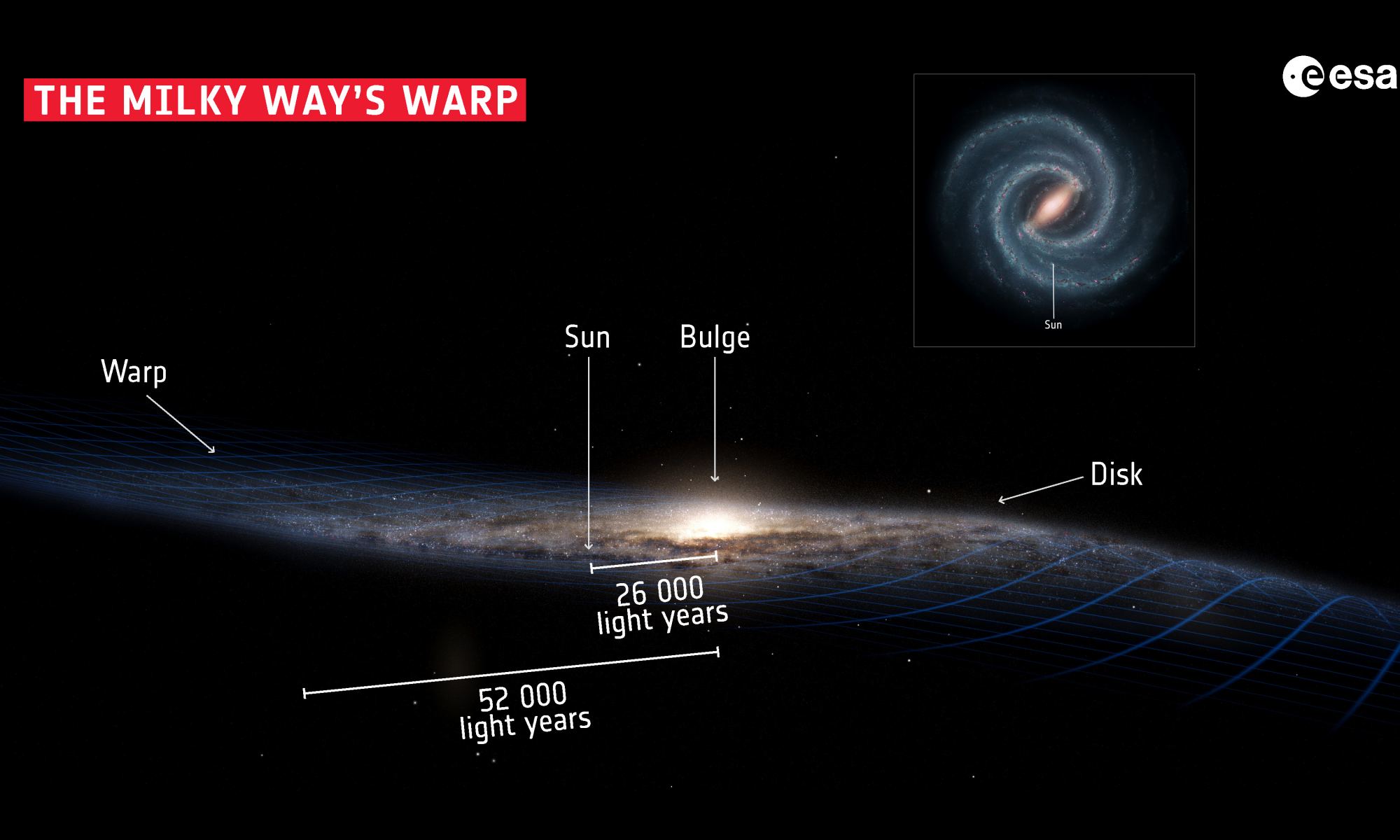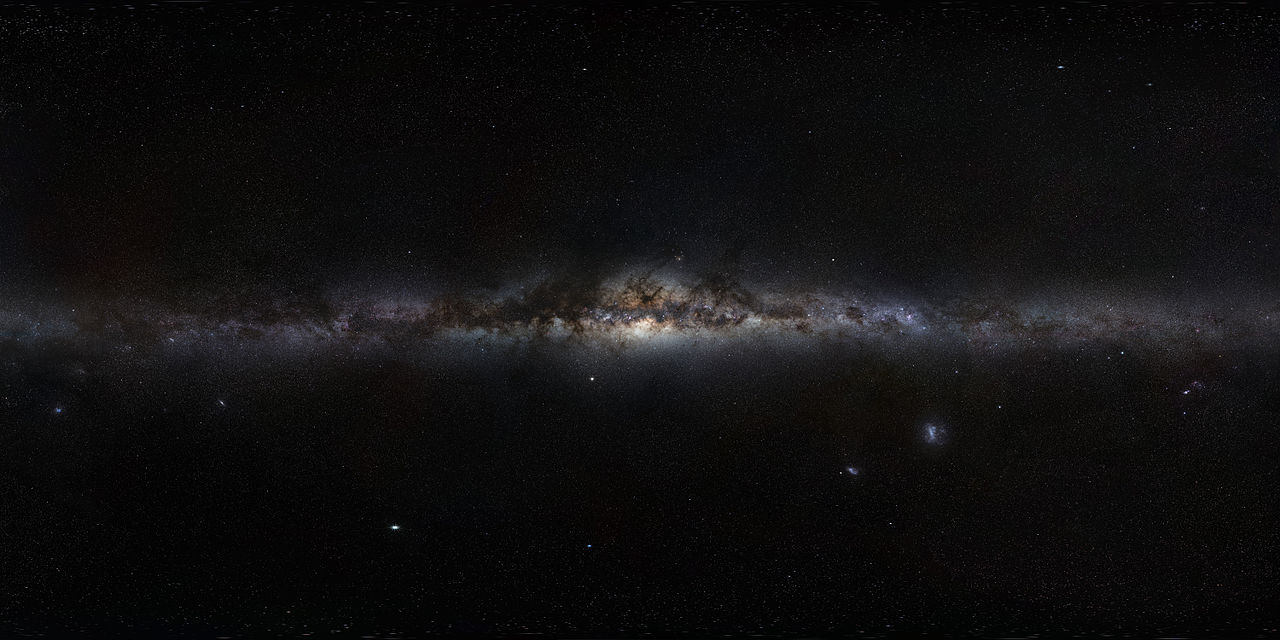Astronomers examining a star cluster near Sgr A*, the Milky Way’s supermassive black hole, found that the cluster has some unusually young members for its location. That’s difficult to explain since the region so close to the powerful black hole is infused with powerful radiation and dominated by the black hole’s extremely powerful gravitational force. According to our understanding of stellar formation, young stars shouldn’t be there.
Continue reading “New Stars Forming Uncomfortably Close to the Milky Way’s Supermassive Black Hole”The Milky Way's Mass is Much Lower Than We Thought

How massive is the Milky Way? It’s an easy question to ask, but a difficult one to answer. Imagine a single cell in your body trying to determine your total mass, and you get an idea of how difficult it can be. Despite the challenges, a new study has calculated an accurate mass of our galaxy, and it’s smaller than we thought.
Continue reading “The Milky Way's Mass is Much Lower Than We Thought”The Milky Way's Disk is Warped. Is That Because our Dark Matter Halo is Tilted?
It’s difficult to determine the shape of our galaxy. So difficult that only in the last century did we learn that the Milky Way is just one galaxy among billions. So it’s not surprising that despite all our modern telescopes and spacecraft we are still mapping the shape of our galaxy. And one of the more interesting discoveries is that the Milky Way is warped. One explanation for this is that our galaxy has undergone collisions, but a new study argues that it’s caused by dark matter.
Continue reading “The Milky Way's Disk is Warped. Is That Because our Dark Matter Halo is Tilted?”Ancient Stars Somehow Survived Close to the Center of the Milky Way
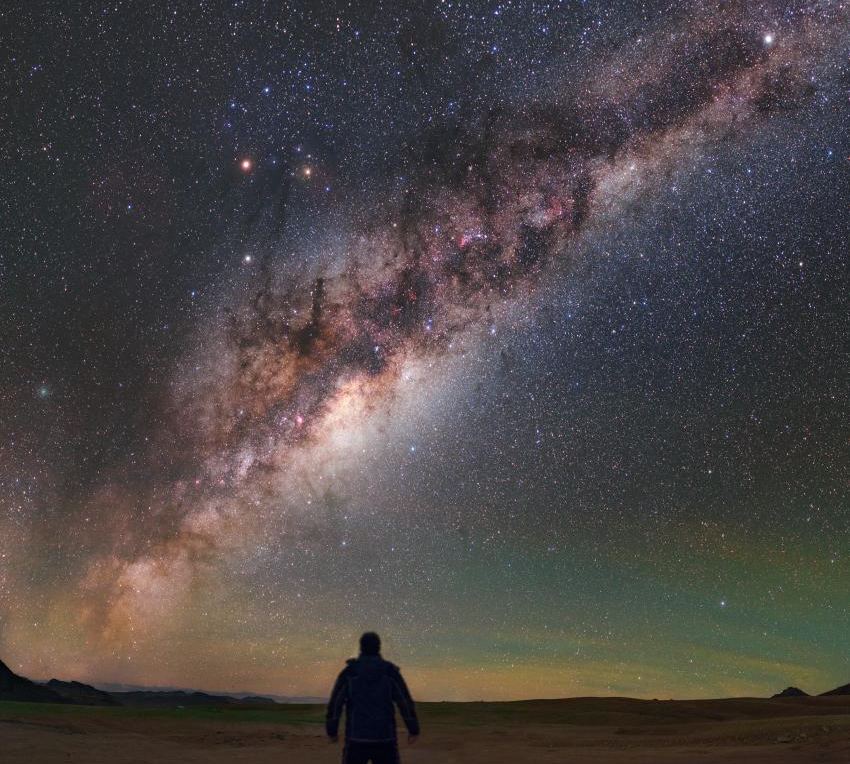
The core of our Milky Way Galaxy draws astronomers’ attention like moths to a flame. That’s because there’s a lot going on there. Not only is there a supermassive black hole, but also populations of very ancient red giant stars that swarm the center. Most of them date back at least to the formation of the Galaxy.
Continue reading “Ancient Stars Somehow Survived Close to the Center of the Milky Way”There Are Hundreds of Mysterious Filaments at the Center of the Milky Way
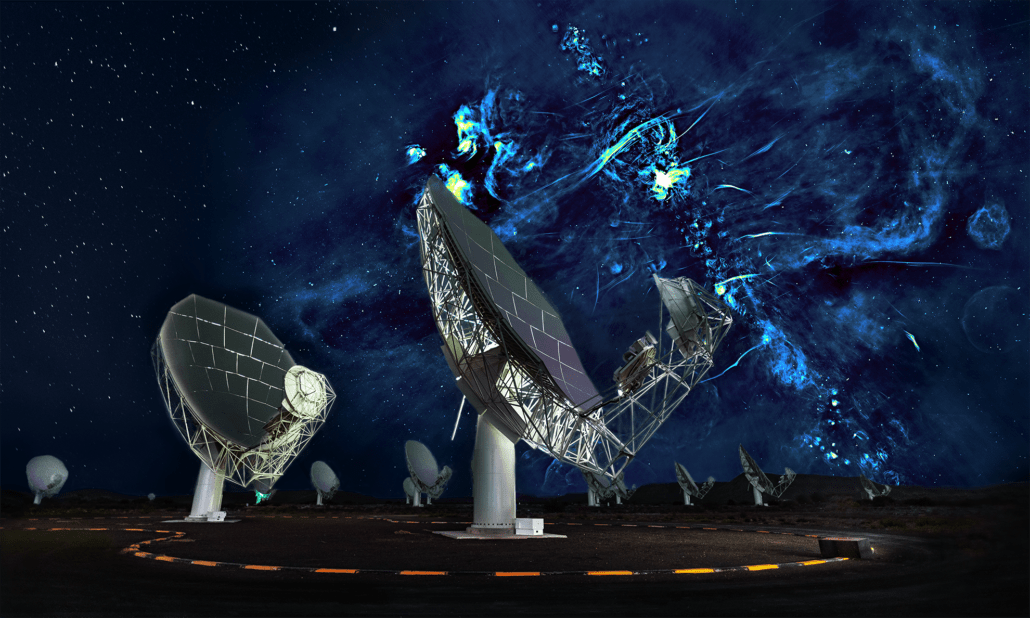
Several million years ago, the core of our galaxy experienced a powerful event. It blew out a huge bi-lobed bubble that blasted through the interstellar medium in two directions. Whatever it was, it released huge amounts of energy from the central supermassive black hole, Sagittarius A* (Sgr A* for short).
Continue reading “There Are Hundreds of Mysterious Filaments at the Center of the Milky Way”Astronomers are Searching for a Galaxy-Wide Transmitter Beacon at the Center of the Milky Way

It has been over sixty years since the first Search for Extraterrestrial Intelligence (SETI) survey occurred. This was Project Ozma, a survey led by Dr. Frank Drake (who devised the Drake Equation) that used the National Radio Astronomy Observatory (NRAO) in Green Bank, West Virginia, to listen for radio transmissions from Epsilon Eridani and Tau Ceti. While the search revealed nothing of interest, it paved the way for decades of research, theory, and attempts to find evidence of technological activity (aka. “technosignatures”).
The search continues today, with researchers using next-generation instruments and analytical methods to find the “needle in the cosmic haystack.” This is the purpose behind Breakthrough Listen Investigation for Periodic Spectral Signals (BLIPSS), a collaborative SETI project led by Cornell graduate student Akshay Suresh to look for technosignatures at the center of the Milky Way. In a recent paper, Suresh and his team shared their initial findings, which were made possible thanks to data obtained by the Greenbank Observatory and a proprietary algorithm they developed.
Continue reading “Astronomers are Searching for a Galaxy-Wide Transmitter Beacon at the Center of the Milky Way”What Does the Milky Way Look Like?
Beginning in 1610, when famed Renaissance polymath Galileo Galilei observed the night sky using a telescope of his own manufacture, astronomers gradually realized that our Solar System is part of a vast collection of stars known today as the Milky Way Galaxy. By the 20th century, astronomers had a good idea of its size and structure, which consisted of a central “bulge” surrounded by an extended disk with spiral arms. Despite all we’ve learned, determining the true morphology of the Milky Way has remained a challenge for astronomers.
Since we, the observers, are embedded in the Milky Way’s disk, we cannot see through the center and observe what’s on the other side. Using various methods, though, astronomers are getting closer to recreating what a “birds-eye” view of the galaxy would look like. For instance, a team of researchers from the Chinese Academy of Sciences (CAS) used the precise locations of very young objects in our galaxy (for the first time) to measure the morphology of the Milky Way. This revealed a multiple-arm morphology consisting of two symmetrical arms in the inner region and many irregular ones in the outer region.
Continue reading “What Does the Milky Way Look Like?”A Tadpole-Shaped Cloud of Gas is Whirling Around a Black Hole
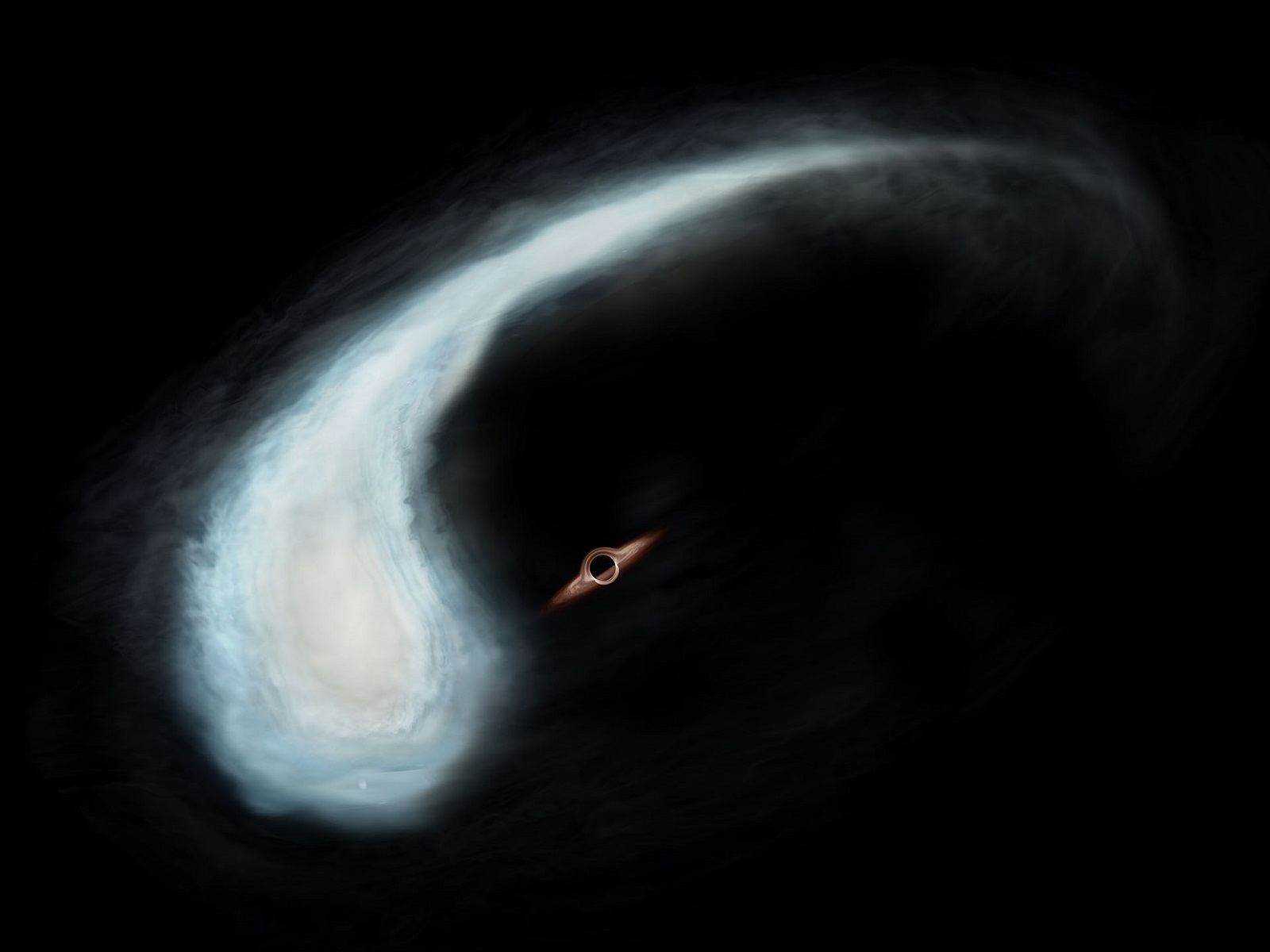
In the 1930s, astrophysicists theorized that at the end of their life cycle, particularly massive stars would collapse, leaving behind remnants of infinite mass and density. As a proposed resolution to Einstein’s field equations (for his Theory of General Relativity), these objects came to be known as “black holes” because nothing (even light) could escape them. By the 1960s, astronomers began to infer the existence of these objects based on the observable effects they have on neighboring objects and their surrounding environment.
Despite improvements in instruments and interferometry (which led to the first images of M87 and Sagittarius A*), the study of black holes still relies on indirect methods. In a recent study, a team of Japanese researchers identified an unusual cloud of gas that appears to have been elongated by a massive, compact object that it orbits. Since there are no massive stars in its vicinity, they theorize that the cloud (nicknamed the “Tadpole” because of its shape) orbits a black hole roughly 27,000 light-years away in the constellation Sagittarius.
Continue reading “A Tadpole-Shaped Cloud of Gas is Whirling Around a Black Hole”A Mysterious Blob Near the Milky Way’s Supermassive Black Hole Might Finally Have an Explanation
At the center of the Milky Way, there is a massive persistent radio source known as Sagittarius A*. Since the 1970s, astronomers have known that this source is a supermassive black hole (SMBH) roughly 4 million times the mass of our Sun. Thanks to advancements in optics, spectrometers, and interferometry, astronomers have been able to peer into Galactic Center. In addition, thanks to the international consortium known as the Event Horizon Telescope (EHT), the world got to see the first image of Sagittarius A* (Sgr A*) in May 2022.
These efforts have allowed astronomers and astrophysicists to characterize the environment at the center of our galaxy and see how the laws of physics work under the most extreme conditions. For instance, scientists have been observing a mysterious elongated object around the Sgr A* (named X7) and wondered what it was. In a new study based on two decades’ worth of data, an international team of astronomers with the UCLA Galactic Center Group (GCG) and the Keck Observatory have proposed that it could be a debris cloud created by a stellar collision.
Continue reading “A Mysterious Blob Near the Milky Way’s Supermassive Black Hole Might Finally Have an Explanation”Globular Star Clusters are Constantly Kicking Stars out of the Galaxy
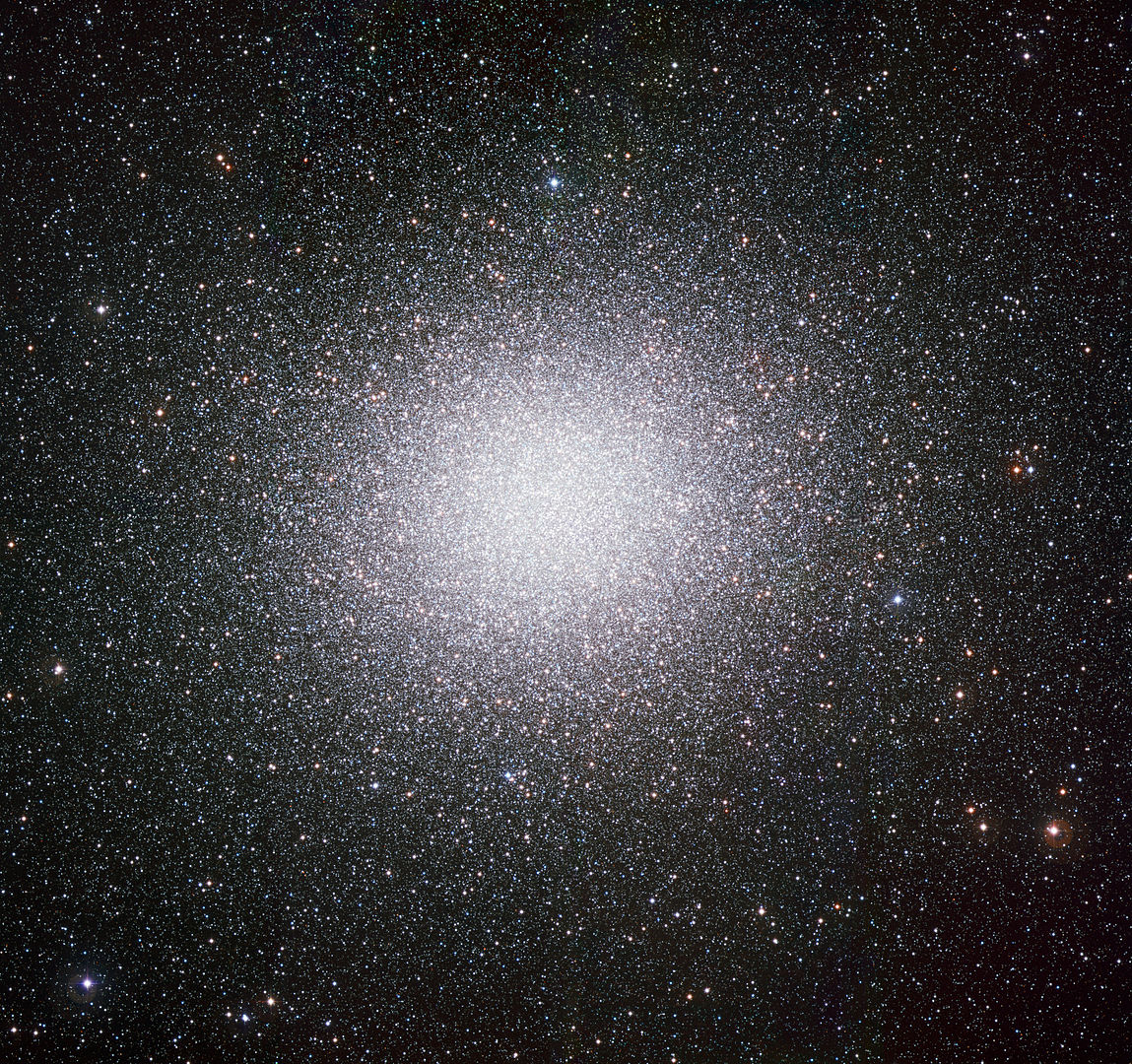
All the stars we can see with the naked eye are part of the Milky Way. The gravitational power of the galaxy’s combined mass binds the stars to the galaxy. But sometimes stars are evicted from the galaxy.
These stars are called hypervelocity stars, and some of them are born from powerful gravitational interactions in globular clusters.
Continue reading “Globular Star Clusters are Constantly Kicking Stars out of the Galaxy”

